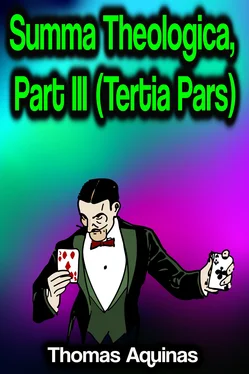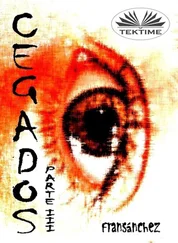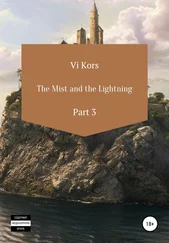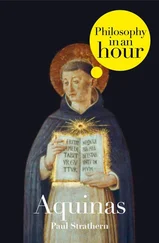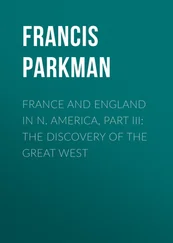The reason of this order is that the shepherds represent the apostles and other believers of the Jews, to whom the faith of Christ was made known first; among whom there were "not many mighty, not many noble," as we read 1 Cor. 1:26. Secondly, the faith of Christ came to the "fulness of the Gentiles"; and this is foreshadowed in the Magi. Thirdly it came to the fulness of the Jews, which is foreshadowed in the righteous. Wherefore also Christ was manifested to them in the Jewish Temple.
Reply Obj. 1: As the Apostle says (Rom. 9:30, 31): "Israel, by following after the law of justice, is not come unto the law of justice": but the Gentiles, "who followed not after justice," forestalled the generality of the Jews in the justice which is of faith. As a figure of this, Simeon, "who was waiting for the consolation of Israel," was the last to know Christ born: and he was preceded by the Magi and the shepherds, who did not await the coming of Christ with such longing.
Reply Obj. 2: Although the "fulness of the Gentiles came in" unto faith before the fulness of the Jews, yet the first-fruits of the Jews preceded the first-fruits of the Gentiles in faith. For this reason the birth of Christ was made known to the shepherds before the Magi.
Reply Obj. 3: There are two opinions about the apparition of the star seen by the Magi. For Chrysostom (Hom. ii in Matth. [*Opus Imperf. in Matth., falsely ascribed to Chrysostom]), and Augustine in a sermon on the Epiphany (cxxxi, cxxxii), say that the star was seen by the Magi during the two years that preceded the birth of Christ: and then, having first considered the matter and prepared themselves for the journey, they came from the farthest east to Christ, arriving on the thirteenth day after His birth. Wherefore Herod, immediately after the departure of the Magi, "perceiving that He was deluded by them," commanded the male children to be killed "from two years old and under," being doubtful lest Christ were already born when the star appeared, according as he had heard from the Magi.
But others say that the star first appeared when Christ was born, and that the Magi set off as soon as they saw the star, and accomplished a journey of very great length in thirteen days, owing partly to the Divine assistance, and partly to the fleetness of the dromedaries. And I say this on the supposition that they came from the far east. But others, again, say that they came from a neighboring country, whence also was Balaam, to whose teaching they were heirs; and they are said to have come from the east, because their country was to the east of the country of the Jews. In this case Herod killed the babes, not as soon as the Magi departed, but two years after: and that either because he is said to have gone to Rome in the meanwhile on account of an accusation brought against him, or because he was troubled at some imminent peril, and for the time being desisted from his anxiety to slay the child, or because he may have thought that the Magi, "being deceived by the illusory appearance of the star, and not finding the child, as they had expected to, were ashamed to return to him": as Augustine says (De Consensu Evang. ii). And the reason why he killed not only those who were two years old, but also the younger children, would be, as Augustine says in a sermon on the Innocents, because he feared lest a child whom the stars obey, might make himself appear older or younger. _______________________
SEVENTH ARTICLE [III, Q. 36, Art. 7]
Whether the Star Which Appeared to the Magi Belonged to the Heavenly
System?
Objection 1: It would seem that the star which appeared to the Magi belonged to the heavenly system. For Augustine says in a sermon on the Epiphany (cxxii): "While God yet clings to the breast, and suffers Himself to be wrapped in humble swaddling clothes, suddenly a new star shines forth in the heavens." Therefore the star which appeared to the Magi belonged to the heavenly system.
Obj. 2: Further, Augustine says in a sermon on the Epiphany (cci): "Christ was made known to the shepherds by angels, to the Magi by a star. A heavenly tongue speaks to both, because the tongue of the prophets spoke no longer." But the angels who appeared to the shepherds were really angels from heaven. Therefore also the star which appeared to the Magi was really a star from the heavens.
Obj. 3: Further, stars which are not in the heavens but in the air are called comets, which do not appear at the birth of kings, but rather are signs of their approaching death. But this star was a sign of the King's birth: wherefore the Magi said (Matt. 2:2): "Where is He that is born King of the Jews? For we have seen His star in the east." Therefore it seems that it was a star from the heavens.
On the contrary, Augustine says (Contra Faust. ii): "It was not one of those stars which since the beginning of the creation observe the course appointed to them by the Creator; but this star was a stranger to the heavens, and made its appearance at the strange sight of a virgin in childbirth."
I answer that, As Chrysostom says (Hom. vi in Matth.), it is clear, for many reasons, that the star which appeared to the Magi did not belong to the heavenly system. First, because no other star approaches from the same quarter as this star, whose course was from north to south, these being the relative positions of Persia, whence the Magi came, and Judea. Secondly, from the time [at which it was seen]. For it appeared not only at night, but also at midday: and no star can do this, not even the moon. Thirdly, because it was visible at one time and hidden at another. For when they entered Jerusalem it hid itself: then, when they had left Herod, it showed itself again. Fourthly, because its movement was not continuous, but when the Magi had to continue their journey the star moved on; when they had to stop the star stood still; as happened to the pillar of a cloud in the desert. Fifthly, because it indicated the virginal Birth, not by remaining aloft, but by coming down below. For it is written (Matt. 2:9) that "the star which they had seen in the east went before them, until it came and stood over where the child was." Whence it is evident that the words of the Magi, "We have seen His star in the east," are to be taken as meaning, not that when they were in the east the star appeared over the country of Judea, but that when they saw the star it was in the east, and that it preceded them into Judea (although this is considered doubtful by some). But it could not have indicated the house distinctly, unless it were near the earth. And, as he [Chrysostom] observes, this does not seem fitting to a star, but "of some power endowed with reason." Consequently "it seems that this was some invisible force made visible under the form of a star."
Wherefore some say that, as the Holy Ghost, after our Lord's Baptism, came down on Him under the form of a dove, so did He appear to the Magi under the form of a star. While others say that the angel who, under a human form, appeared to the shepherds, under the form of a star, appeared to the Magi. But it seems more probable that it was a newly created star, not in the heavens, but in the air near the earth, and that its movement varied according to God's will. Wherefore Pope Leo says in a sermon on the Epiphany (xxxi): "A star of unusual brightness appeared to the three Magi in the east, which, through being more brilliant and more beautiful than the other stars, drew men's gaze and attention: so that they understood at once that such an unwonted event could not be devoid of purpose."
Reply Obj. 1: In Holy Scripture the air is sometimes called the heavens—for instance, "The birds of the heavens [Douay: 'air'] and the fishes of the sea."
Reply Obj. 2: The angels of heaven, by reason of their very office, come down to us, being "sent to minister." But the stars of heaven do not change their position. Wherefore there is no comparison.
Читать дальше
